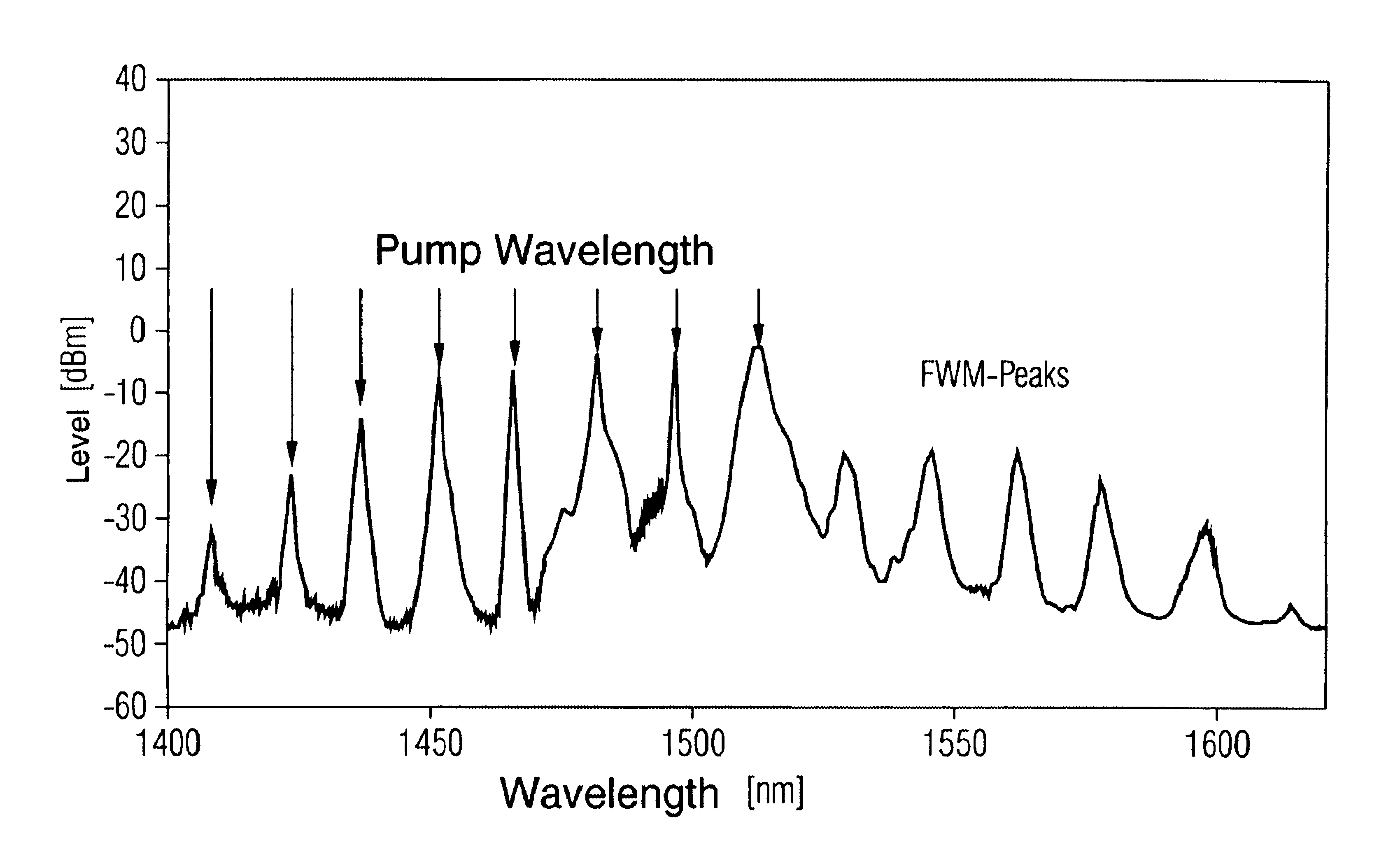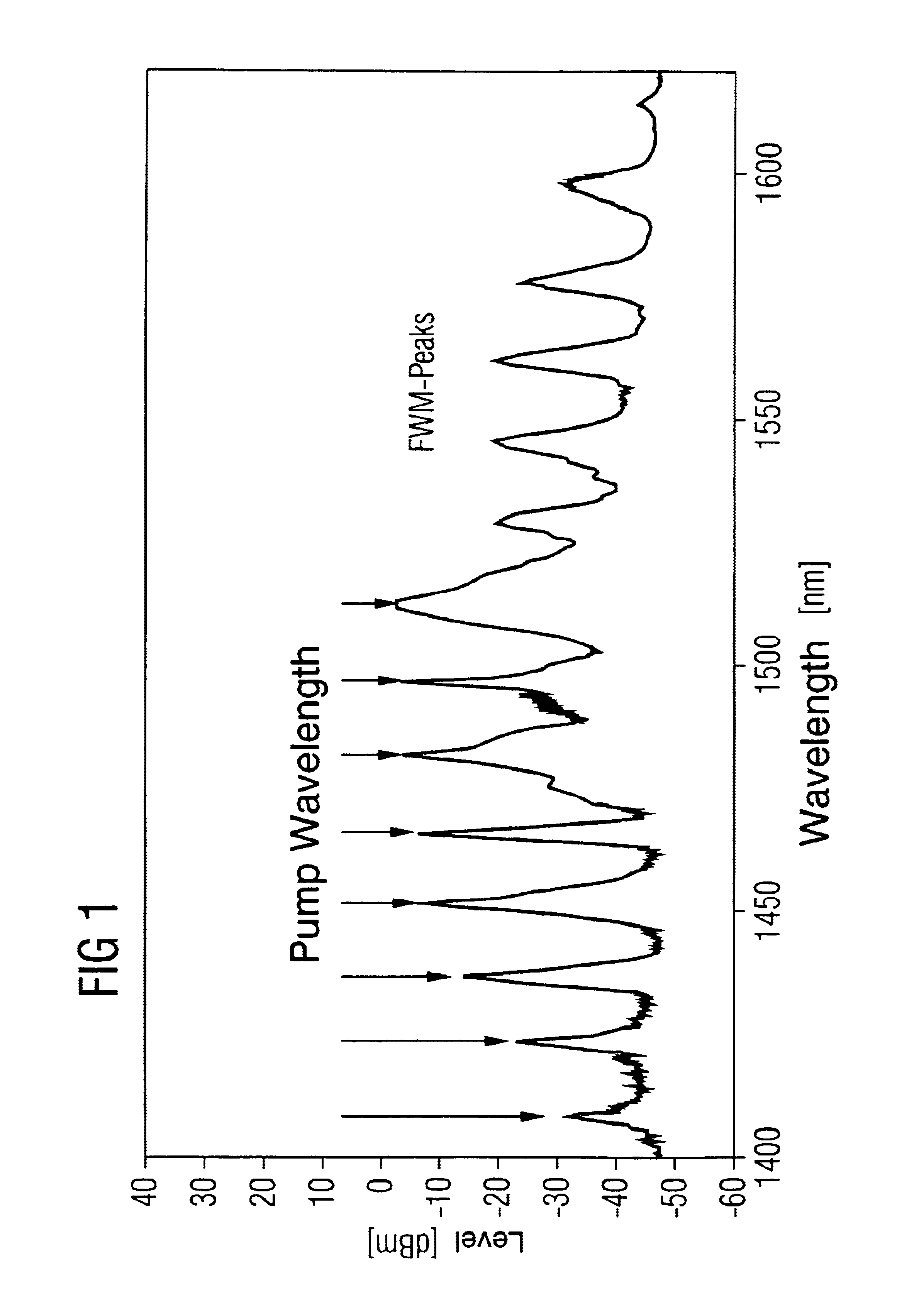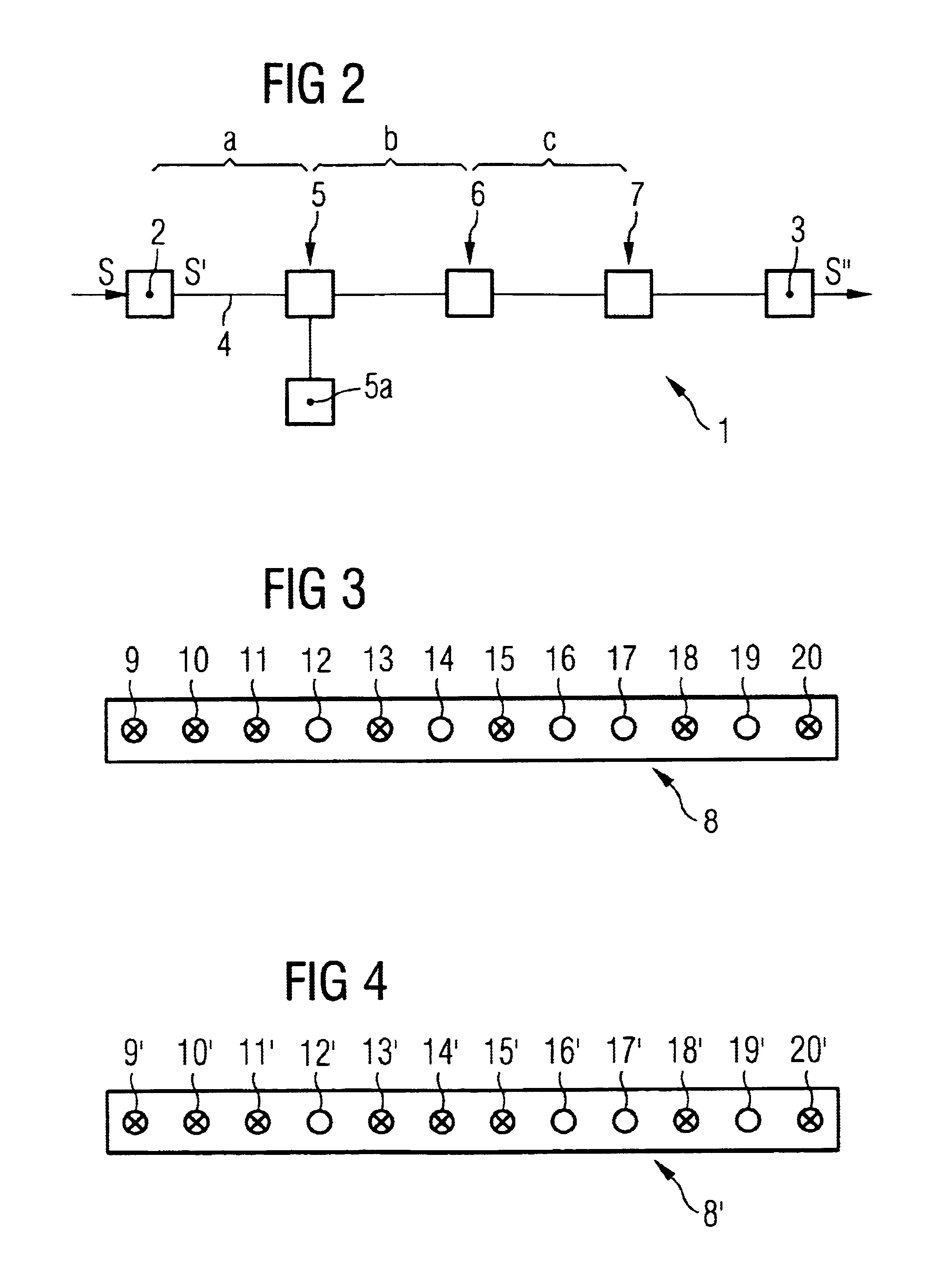Multiplexer for providing non-equidistant intervals between pump wavelengths in broadband raman amplifiers
a broadband raman amplifier and multi-channel technology, applied in the field of multi-channel amplifiers, can solve the problems of deterioration of optical signal-to-noise ratio osnr, weak signal, and relatively small power which can be injected into the optical waveguide via interference filters
- Summary
- Abstract
- Description
- Claims
- Application Information
AI Technical Summary
Benefits of technology
Problems solved by technology
Method used
Image
Examples
Embodiment Construction
FIG. 2 shows a schematic illustration of an optical message transmission path 1 which has a transmitting device 2, a receiving device 3, an optical waveguide 4, and a number of amplification devices 5, 6, 7.
A received electrical signal S′ is converted to an optical WDM signal S′ in the transmitting device 2 via laser diodes (“WDM”=Wavelength Division Multiplex). The WDM signal S′ is injected into the optical waveguide 4 and is transmitted to the receiving device 3, where it is converted back to an electrical signal S′ via semiconductor diodes.
Owing to the attenuating characteristics of the optical waveguide 4, the WDM signal S′ is weakened in the course of transmission from the transmitting device 2 to the receiving device 3. The WDM signal S′ is therefore amplified, on the basis of stimulated Raman scatter, after a first optical waveguide section a by the amplification device 5, and after further optical waveguide sections b, c by the amplification devices 6, 7.
To this end, each am...
PUM
 Login to View More
Login to View More Abstract
Description
Claims
Application Information
 Login to View More
Login to View More - R&D
- Intellectual Property
- Life Sciences
- Materials
- Tech Scout
- Unparalleled Data Quality
- Higher Quality Content
- 60% Fewer Hallucinations
Browse by: Latest US Patents, China's latest patents, Technical Efficacy Thesaurus, Application Domain, Technology Topic, Popular Technical Reports.
© 2025 PatSnap. All rights reserved.Legal|Privacy policy|Modern Slavery Act Transparency Statement|Sitemap|About US| Contact US: help@patsnap.com



